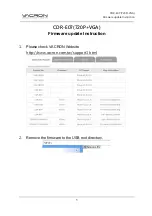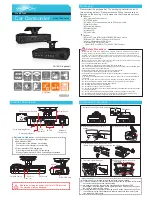
Performance and troubleshooting
156
Alvium G1 User Guide V1.1.1
Dark current compensation
All sensors accumulate dark current in the pixels. Dark current increases the signal
level and black level. Most sensors in Alvium G1 cameras compensate for this.
If cameras are operated at high temperatures or long exposure times,
compensation reaches its limits. The typical compensation mechanism uses a
margin
to compensate for dark current. This works only until dark current reaches
the size of the margin. The following table shows the relation of the margin and
accumulated dark current for a pixel in 8-bit mode with a maximum value of 255.
Additional compensation
If compensation limits are reached and you cannot decrease operating
temperature or exposure time, what can you do to keep signal quality high?
You can increase the margin size by using gain, with the following side effects:
• To give space to a larger margin, the effective pixel capacity decreases.
• White and light gray values are shifted down to gray.
Effective signal versus noise
Description
The pixel has accumulated no dark current, the margin has
maximum size.
The pixel has accumulated some dark current, reducing the size
of the margin.
The following images show a pixel that has accumulated a higher dark current than the margin.
The pixel has accumulated dark current, the margin reduces to 0.
• Dark current compensation stays active.
• Maximum saturation signal decreases.
• Fixed pattern noise increases.
This sensor-internal compensation is typically used in the analog
domain.
Table 83: Accumulated dark current affecting the effective image signal
Effective
image
signal
Accumulated
Dark
Current
Margin
Saturation = 255
Black level = 0
Effective
image
signal
Margin
Saturation = 255
Black level = 0
Effective
image
signal
Accumulated
Dark
Current
Margin
Saturation = 255
Black level = 0
Effective
image
signal
Accumulated
Dark
Current
Saturation < 255
Black level = 0









































